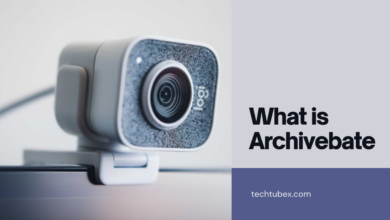Demystifying dev/sr0: A Deep Dive into the Linux Device Naming Convention
Demystifying dev/sr0: A Deep Dive into the Linux Device Naming Convention

In the vast and intricate landscape of Linux systems, the nomenclature assigned to devices plays a crucial role in understanding their functions and interactions. Among the numerous device names, “dev/sr0” stands out as a reference to a specific type of device, often associated with optical drives. In this article, we will embark on a comprehensive exploration of “dev/sr0,” unraveling its significance, its role in Linux systems, and the broader context of device naming conventions.
Table of Contents
ToggleUnderstanding the Linux Device dev/sr0
Before delving into the specifics of “dev/sr0,” it’s essential to grasp the broader device naming conventions in Linux. In the Linux file system, everything is treated as a file, and devices are no exception.
The naming convention for devices follows a systematic structure. The “dev” prefix signifies the device directory, and the subsequent letters and numbers designate the type and instance of the device. Understanding this convention is pivotal for Linux administrators, as it facilitates efficient management and troubleshooting of devices within the system.
Decoding “dev/sr0”
Now, let’s focus on “dev/sr0” and decipher its meaning within the Linux ecosystem. The “sr” in “sr0” typically denotes SCSI (Small Computer System Interface) CD/DVD-ROM drives. SCSI, despite its name, has evolved beyond its original purpose and is now used as a general term for various storage technologies.
The numeral “0” in “sr0” signifies the first instance of this type of device. In Linux, device numbers often start from zero, indicating the primary device of a particular type. Therefore, “dev/sr0” is commonly associated with the first SCSI CD/DVD-ROM drive connected to the system.
Role of “dev/sr0” in Linux Systems
The presence of “dev/sr0” on a Linux system indicates the availability of a CD/DVD-ROM drive. This device is instrumental for reading and, in some cases, writing to optical discs. Linux treats these devices as special files, allowing users and applications to interact with them as if they were standard files.
The “dev/sr0” designation is particularly relevant when mounting and unmounting optical media. Mounting involves making the content of the optical disc accessible to the file system, while unmounting disconnects the disc from the file system, allowing it to be safely ejected. Understanding the role of “dev/sr0” is crucial for executing these operations effectively.
Navigating the “/dev” Directory
To explore the intricacies of “dev/sr0,” one must navigate the “/dev” directory A typical Linux system will have numerous device files, ranging from hard drives (“/dev/sda”) to USB devices (“/dev/sdb1”) and more.
When inspecting the “/dev” directory, users can locate “sr0” alongside other device files. This directory serves as a centralized hub for managing and interacting with devices, providing a clear and organized structure for administrators and users alike.
Udev and dev/sr0
The dynamic nature of modern computing, with devices being added or removed dynamically, necessitates a flexible device naming system. The “udev” (user device) subsystem in Linux is responsible for dynamic device management and plays a significant role in device naming.
Udev assigns device names based on various attributes, such as device type, connection port, and other identifying characteristics. This dynamic naming ensures that devices are consistently recognized and accessible, even as hardware configurations change.
Impact on System Administration
Understanding the significance of “dev/sr0” is crucial for system administrators tasked with managing and maintaining Linux systems. Knowledge of device naming conventions aids in troubleshooting issues related to storage devices, enabling administrators to identify and address problems efficiently.
System administrators often encounter scenarios where the absence or misconfiguration of “dev/sr0” leads to difficulties in accessing or utilizing CD/DVD-ROM drives. In such cases, a deeper understanding of the device naming convention allows administrators to navigate system logs, identify errors, and implement corrective measures.
Mounting and Unmounting Optical Media
One of the primary interactions with “dev/sr0” involves mounting and unmounting optical media. Mounting is the process of making the content of an optical disc accessible to the file system. This enables users and applications to read or write data to the disc as if it were a standard file. Unmounting, on the other hand, disconnects the optical disc from the file system, allowing it to be safely ejected.
For example:
sudo mount /dev/sr0 /mnt/cdrom
In this command, “/dev/sr0” is the source device, and “/mnt/cdrom” is the destination mount point.
Conversely, to unmount the optical media, the “umount” command is employed:
sudo umount /dev/sr0
Understanding these commands and their impact on “dev/sr0” is essential for effective management of optical drives in a Linux environment.
Role in Virtualization Environments
In virtualization environments, where multiple operating systems can run concurrently on a single physical machine, the presence of “dev/sr0” takes on additional significance. Virtual machines (VMs) often emulate CD/DVD-ROM drives, and the associated device files, including “dev/sr0,” facilitate the interaction between the host and guest operating systems.
In virtualization scenarios, administrators may need to manage “dev/sr0” from both the host and guest perspectives. This requires a nuanced understanding of how device naming conventions function within virtualized environments, ensuring seamless communication between the host system and virtual machines.
Potential Issues and Troubleshooting
While “dev/sr0” is a critical component for managing CD/DVD-ROM drives in Linux, it is not immune to potential issues. Understanding common problems and their resolutions is crucial for system administrators tasked with maintaining optimal system functionality.
-
Device Not Detected:
- Additionally, reviewing system logs can provide insights into any errors or issues related to the device.
-
Mounting Failures:
- Mounting issues may arise due to insufficient permissions, incorrect mount points, or damaged optical media. Verifying the mount point’s existence, checking permissions, and inspecting the condition of the optical disc can help diagnose and address mounting failures.
-
Unable to Eject Disc:
- If users encounter difficulties ejecting a disc from “dev/sr0,” administrators can use the “eject” command or explore alternative methods, such as the “eject -r” command to open the drive’s tray. In some cases, ensuring that no processes are accessing the drive can facilitate successful ejection.
-
Virtualization Challenges:
- In virtualized environments, discrepancies between the host and guest configurations may lead to issues with “dev/sr0.” Administrators should verify that the virtual machine settings correctly emulate the presence of a CD/DVD-ROM drive and ensure that device passthrough is appropriately configured.
Conclusion
“dev/sr0” serves as a symbolic gateway to the realm of CD/DVD-ROM drives within Linux systems. Its presence in the “/dev” directory signifies the availability of an optical drive, while its dynamic nature underscores the flexibility and adaptability of Linux’s device naming conventions.
For system administrators and Linux enthusiasts, a comprehensive understanding of “dev/sr0” is indispensable. From mounting and unmounting optical media to troubleshooting issues related to CD/DVD-ROM drives, familiarity with the nuances of device naming conventions enhances the ability to navigate and administer Linux systems effectively.
As technology continues to advance, the role of “dev/sr0” and its counterparts in device naming conventions remains pivotal. Whether managing traditional physical systems or navigating the complexities of virtualized environments, the knowledge encapsulated within “dev/sr0” underscores the elegance and efficiency of Linux’s approach to device representation and interaction.



